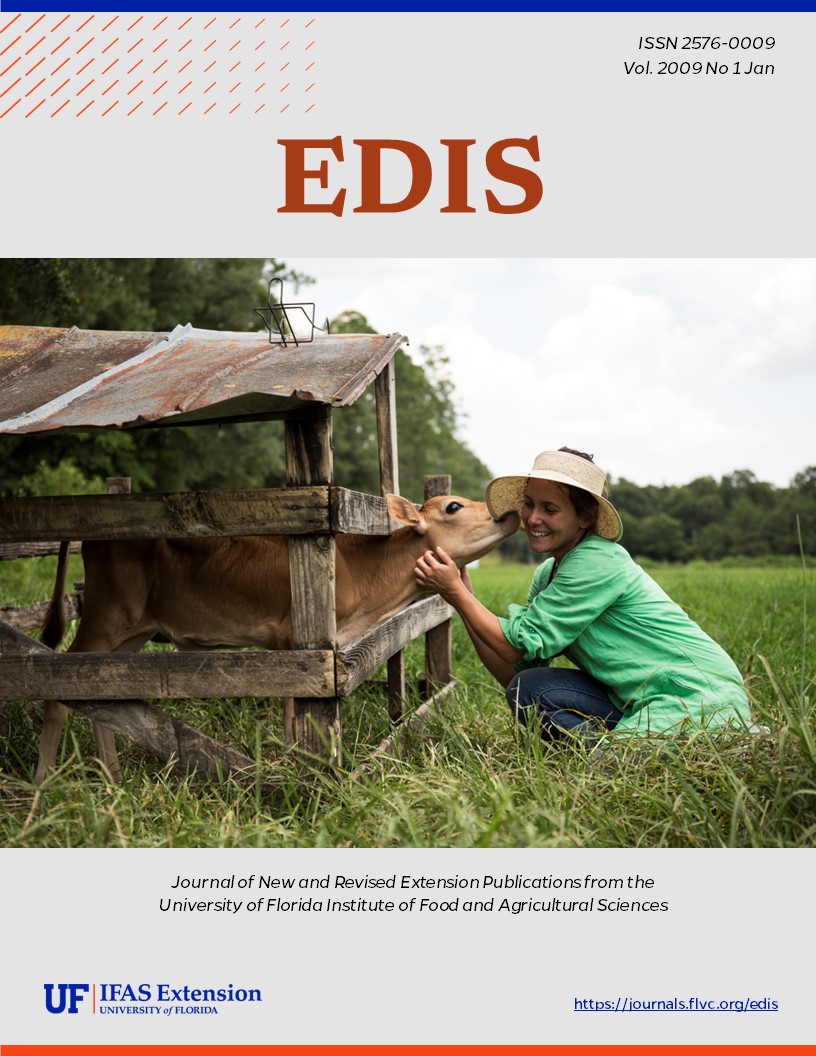Abstract
AN206, a 4-page fact sheet by C. Chad Carr and Larry Eubanks, reports the results of a study to determine the effect of not meeting the USDA’s suggested standard for chilling on the microbial growth and retail acceptability of bone-in, fully-cooked hams. Includes references. Published by the UF Department of Animal Science, October 2008.
References
Dische, F.E., and Elek, S.D. 1957. Experimental food-poisoning by Clostridium welchii. Lancet. 2: 71-74. https://doi.org/10.1016/S0140-6736(57)92545-X
Kalinowski, R.M, R. B. Tompkin, P. W. Bodnaruk, and W. P. Pruett. 2003. Impact of cooking, cooling, and subsequent refrigeration on the growth or survival of Clostridium perfringens in cooked meat and poultry products. J. Food Protection. 66:1227-1232 https://doi.org/10.4315/0362-028X-66.7.1227
McClung, L. S. 1945. Human food poisoning due to growth of Clostridium perfringens (C. welchii) in freshly cooked chickens: preliminary note. J. Bacteriol. 50:229-231. https://doi.org/10.1128/jb.50.2.229-231.1945
Scanga, J. A., F. K. McKeith, J. W. Savell, K. E. Belk, D. B. Griffin, L. I. Wright, A. J. Stetzer, R. C. Person, S. M. Lonergan, T. H. Powell, D. J. Meisinger, and G. C. Smith. 2003. Benchmarking Value in the Pork Supply Chain: Quantitative Strategies and Opportunities to Improve Quality. Final Report to the National Pork Board by Colorado State University, University of Illinois at Urbana, Texas A&M University, and Iowa State University to the American Meat Science Association, Savoy, IL.
Taormina, P.J., G. W. Bartholomew, W. J. Dorsa. 2003. Incidence of Clostridium perfringens in commercially produced cured raw meat product mixtures and behavior in cooked products during chilling and refrigerated storage. J. Food Protection. 66:72-81. https://doi.org/10.4315/0362-028X-66.1.72
USDA. 1999. Performance Standards for the Production of Certain Meat and Poultry Products. Food Safety Inspection Service. Washington D.C. http://www.fsis.usda.gov/OPPDE/rdad/FRPubs/95-033F.pdf Accessed June 9, 2008.
USDA. 2005. Risk Assessment for C. perfringens in RTE Meat and Poultry Products. Food Safety Inspection Service. Washington D.C. http://www.fsis.usda.gov/PDF/CPerfringens_Risk_Assess_ExecSumm_Sep2005.pdf Accessed June 9, 2008.
Zaika, L.L. 2003. Influence of NaCl content and cooling rate on outgrowth of Clostridium perfringens spores in cooked ham and beef. J. Food Protection. 66:1599-1603. https://doi.org/10.4315/0362-028X-66.9.1599

